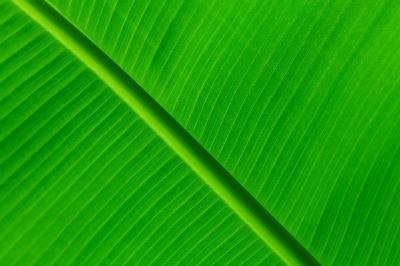Various terms are used to refer to the parts of leaves in angiospermous plants. These leaf parts are reviewed, including some modified parts in certain plants.
Parts of Leaves
A typical complete plant leaf consists of a broad, flat portion called blade or lamina, a leaf stalk or petiole which connects the blade to the stem, and a pair of stipules at the base of the petiole or at the nodes.
Stipules are outgrowth that may appear leaf-like, scale-like, or may even be represented by leaf sheaths or by spines.
Leaf sheaths are tubular structures at the base of certain leaves which clasp the stem, as in grasses.
In bananas, the erect pseudostem consists of overlapping leaf sheaths.
In most grasses, there is a thin appendage called ligule at the apex of the leaf sheath.
Leaf blades are basically flattened and thin which favor maximum absorption of light and carbon dioxide.
The edges of the leaf blades are called margins.
The tip of the leaf blade to the side of the plant is the base; the opposite or free end is called the apex.

Part of banana leaf showing the midrib at the center with blades on both sides, and the penni-parallel venation
However, some parts of leaves or the entire leaves themselves are so modified for various purposes including the balancing of the plant’s need for carbon dioxide absorption and avoidance of excessive water loss.
Plants that are adapted to shade usually have broad, wide leaves, while those that live in dry habitats have reduced leaves.
Stem-like fleshy leaves are found in snake plants or Sansevieria.
In desert plants such as jojoba and creosote, the leaves are small and covered with a thick cuticle that is waterproof.
These small leaves prevent rapid loss of water by maintaining a cooler temperature than the surrounding air temperature.
Sunken stomates and hairy surfaces also help minimize the loss of water from the leaves.
Modified parts of leaves can be found in cacti and climbing plants.
The cacti have leaves that are modified into small, needle-like spines to discourage animals from eating the stem rather than for photosynthesis.
The tendrils of peas and cucumber are specialized for clinging and climbing.
Leaf Venation
Internally, leaves have a framework of ribs and veins which are usually visible externally.
When there is one vein in the middle of the blade that is more prominent than the others, it is called the midrib; the primary divisions on both sides of the midrib are called the lateral veins or nerves.
A vein consists of strands of xylem and phloem.
The xylem transports water and dissolved nutrients; the phloem for organic materials especially sucrose.
The veins of leaves are arranged in two patterns: parallel and netted or reticulated.
Parallel venation occurs in most monocot plants and consists of slender veins that run in the same direction as the lines on a notebook page.
The word “most” is highlighted because not all monocot leaves are parallel-venated, as in members of the family Araceae (example, anthurium).
These veins do not divide and subdivide to form meshes.
Veins may either start from the base of the blade and proceed toward the apex (as in rice, corn, bamboo), or from the midrib to the margins (called penni-parallel, as in banana and canna).
Netted or reticulated venation occurs in most dicots and consists of veins that branch out repeatedly into finer veinlets that unite with each other to form meshes.
This results in the formation of a network of veins usually described as reticulations.
In some leaves the nerves are hardly visible because they are masked by other tissues; such nerves are referred to as obsolete or wanting.
Click to read Monocots vs Dicots vs Eudicots
There are other leaf parts that serve as cover.
Plant leaves and other organs may be covered with trichomes or epidermal hairs, with small waxy glands, or with small rounded appressed scales.
Other parts of leaves are described in the compound leaves.
Plant Leaves and Functions <<< >>> Types of Leaves
<<< Plant Structure
